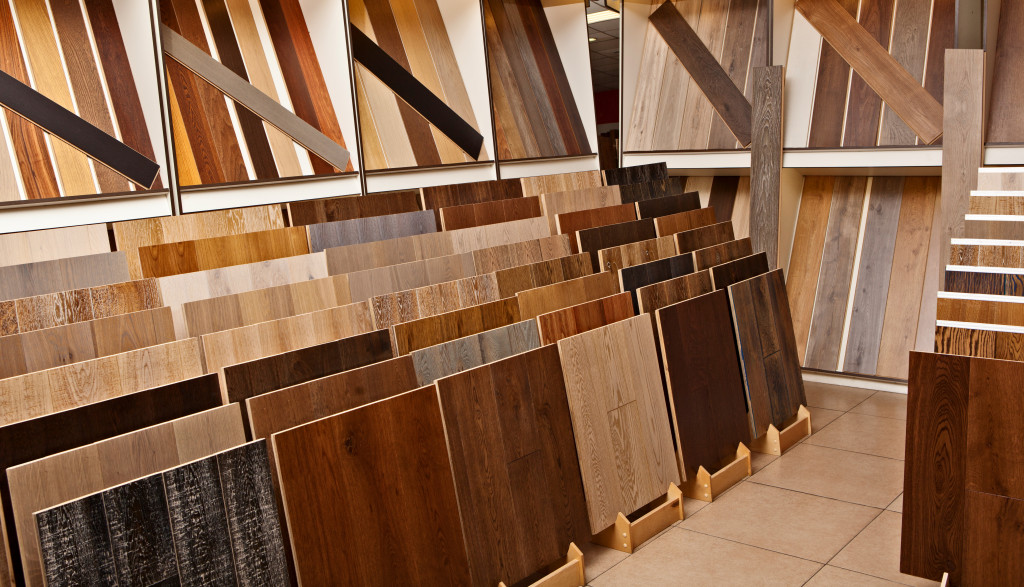Although flooring might not be the spotlight of your home’s interior design, they make up a good majority of your home’s overall appeal. Throughout much of history, hardwood flooring has always been a go-to flooring for many individuals worldwide. Not only does it look gorgeous, but it’s famous for having a useful lifespan and extraordinary hardiness against the natural elements.
However, much of this flooring’s durability is determined by how the homeowner continually maintains their flooring. Treating your hardwood flooring with the right amount of care will help keep it pristine in the long-term. So what are some essential factors that you’ll need to consider? Here’s what you’ll need to know.
Limiting Foot Traffic and Furniture Impact
Although most contractors will usually place a protective coating on hardwood flooring, it’s still susceptible to various superficial damages. Typically, hardwood and different flooring types are designed to be durable and stand on their own when it comes to your usual foot traffic and impacts from chairs. However, a hefty amount of foot traffic can cut down on the overall lifespan of your flooring through wear and tear.
That said, you’ll need to limit your foot traffic in your home. There’s no one cause to damaged flooring, but it’s known that children can have a lasting impact on flooring, especially when it comes to rugs and hardwood flooring that are susceptible to abrasions and impacts. In some cases, children will also play with their toys more aggressively. ; You might want to limit where children are allowed to go.
If you’re accommodating guests that have just been through some rough terrain, they might have some sand and pebbles that might get stuck on their shoes. You’ll need to set up some rules regarding what type of shoes are allowed in a certain part of the house.
Most Asian homes will usually restrict shoes outside the home since dirt and mud can easily stain damage and stain flooring. You can always have a no-shoe policy on certain parts of your home.
Although, damage can be done by the following:
- Shoes with high heels
- Furniture support legs that can slide on the flooring
- Rocks and pebbles that are stuck on the ridges of your shoes
- Steel and wooden boxes sliding across the room

If you’re not confident about the durability of your flooring, you might want to consider replacing or installing a new set of hardwood flooring. Fortunately, natural oak engineered wood flooring is known for its reputation of being one of the most durable types of hardwood flooring in the market. Oak has always been a building material that can stand the test of time and the elements.
Mitigating Water Damage
A little water and rain won’t hurt, right? Well, this isn’t necessarily the case when it comes to wooden infrastructure. If you’re familiar with home maintenance, you’ll know that water and wood won’t mix well together.
It’s important to remember that hardwood was once part of a living tree, which means that it comprises cells that react when they come into contact with water. Wood rot will normally result from wooden surfaces being exposed to water and moisture in the long-term. The last thing that homeowners want is their hardwood flooring slowly losing its once vibrant luster and structural integrity from water damage.
However, it’s not the hardwood flooring that most people should be worried about, but the nooks and crannies on the sides of wooden flooring can be entryways for water. Most would suggest having a dry mop that can easily absorb water. Instead of using a wet mop to clean your floor, you should use a soft-bristled broom since having a wet mop can compromise your floor’s lifespan.
Addressing Pooled Water
Although most homeowners will do everything to mitigate the effects of water damage to their flooring, there will be instances when water can get trapped on hard-to-reach areas of the floor. This is usually caused by different factors, such as spills from water containers, leaking from pipes, and splashes from your kitchen sink.
Even though it’s only a small amount of water that does get trapped on some floorings, this can still slowly chip away at your flooring’s integrity. You’ll need to dry out these areas as soon as possible since molding can happen.
In most cases, commercial wooden flooring has less chance of getting damaged since it uses sealants to prevent water from seeping towards the seams. Most residential and pre-fabricated wooden flooring won’t have seams that are filled but are usually tight. Although, they’re not tight enough to hold back water that might be accumulating.
There are a variety of ways to keep your hardwood flooring in pristine condition. Although higher-quality hardwood won’t necessarily need that much maintenance, there are still a lot of factors that you’ll need to consider when preserving it. As long as you’re keeping it dry and away from too much foot traffic, you’re in a good place.




